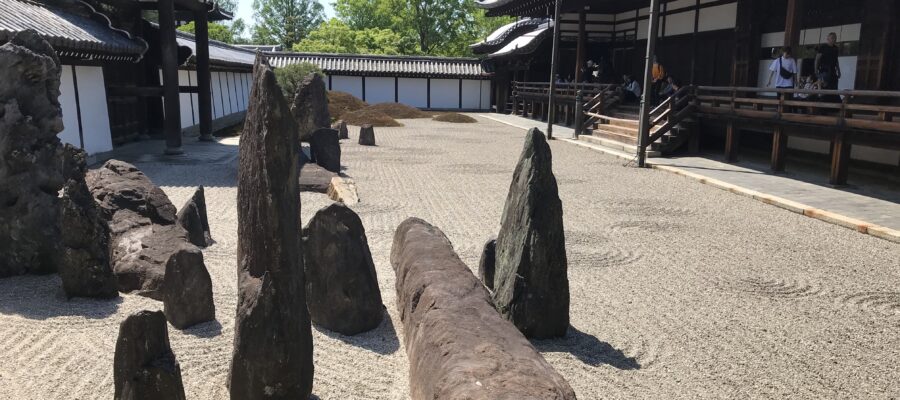東大寺と興福寺から名付けた東福寺
東福寺と聞けば紅葉の名所。特に、通天橋からの眺め、あるいは通天橋の眺めは京都のイメージそのものとしてポスターなどに使われています。創建は鎌倉時代で、時の摂政関白・藤原(九条)道家が、東大寺の“東”、興福寺の“福”から2字を取り、九条家の菩提寺として造営しました。当時は、高さ15mの大仏立像が安置されていたそうです。

八相の庭を見る
今回の訪問の目的は、ズバリ、方丈庭園を見ること。重森三玲が1939年に完成させた「八相の庭」です。広大な方丈の東西南北に4つの庭が配されています。庫裡から方丈に向かう廊下から、右手に東庭が見えます。これは「北斗の庭」と呼ばれていて、昔のトイレ(東司)の柱石を北斗七星の形状に配置しています。
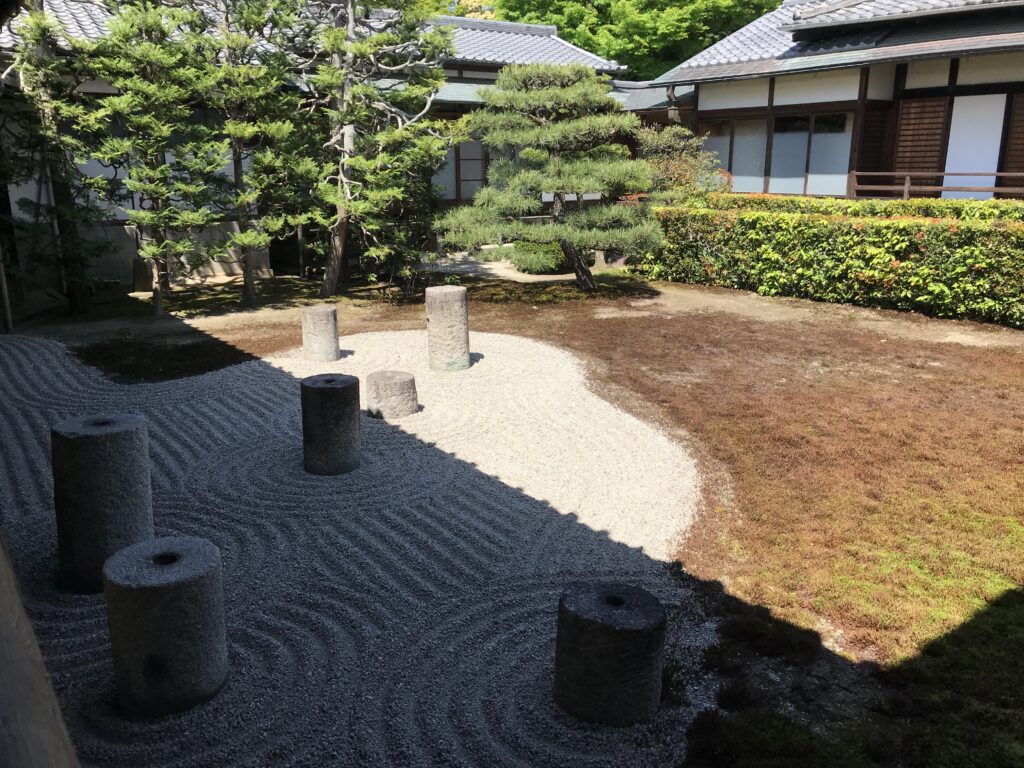
大方丈の迫力ある南庭
そして、左手には南庭が見えます。手前の巨石群は、仙人が住むという4つの仙島を表現しています。最初渡り廊下から切立った巨石を見ると、荒々しさのみの印象でした。方丈側から再度、庭を眺めると、石の周りの地面には白砂の同心円状の砂紋で海を現わしており、細かい表現もわかってきました。
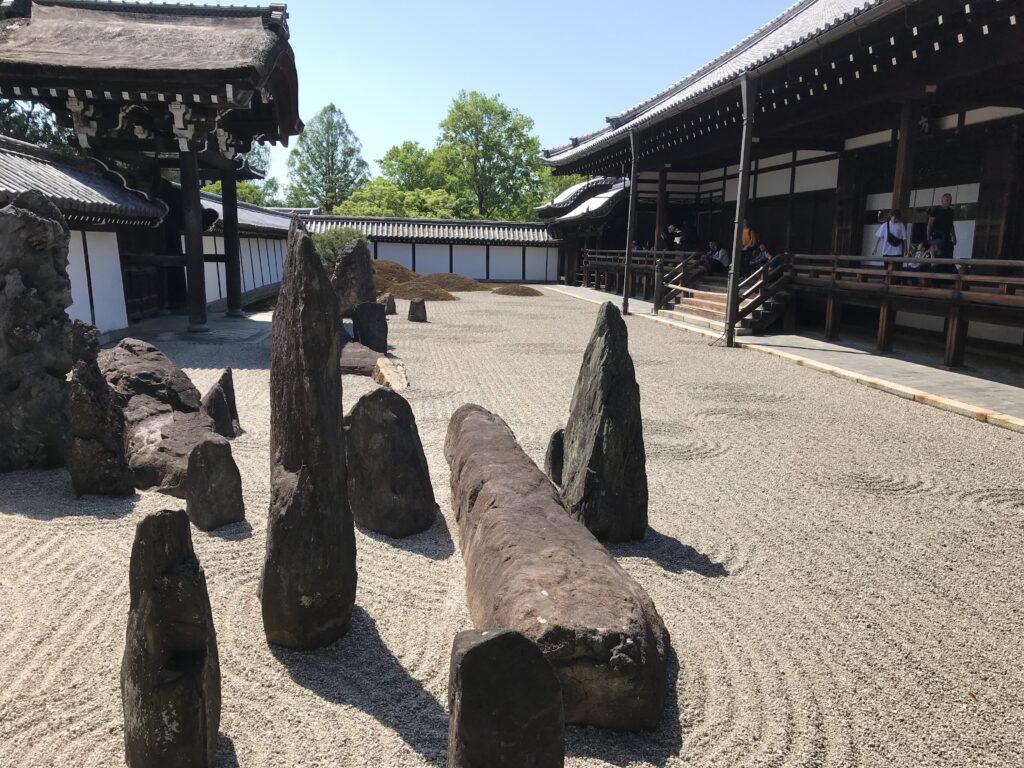
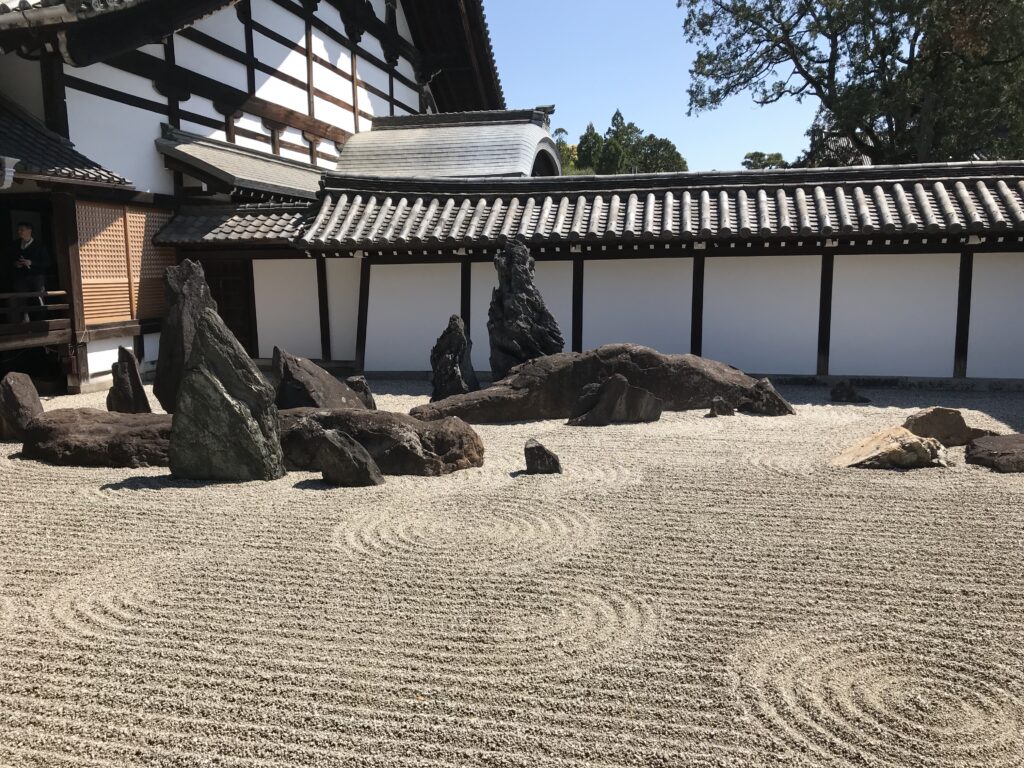
また、西側の奥には、五山になぞらえた築山が築かれています。広さ110坪の横に長い庭ですので、一枚の写真には収まりきらないスケール感があります。方丈の軒下を行ったり来たりしながら、いろいろな角度から庭を眺めてみると、その表情が変わって見えてきます。
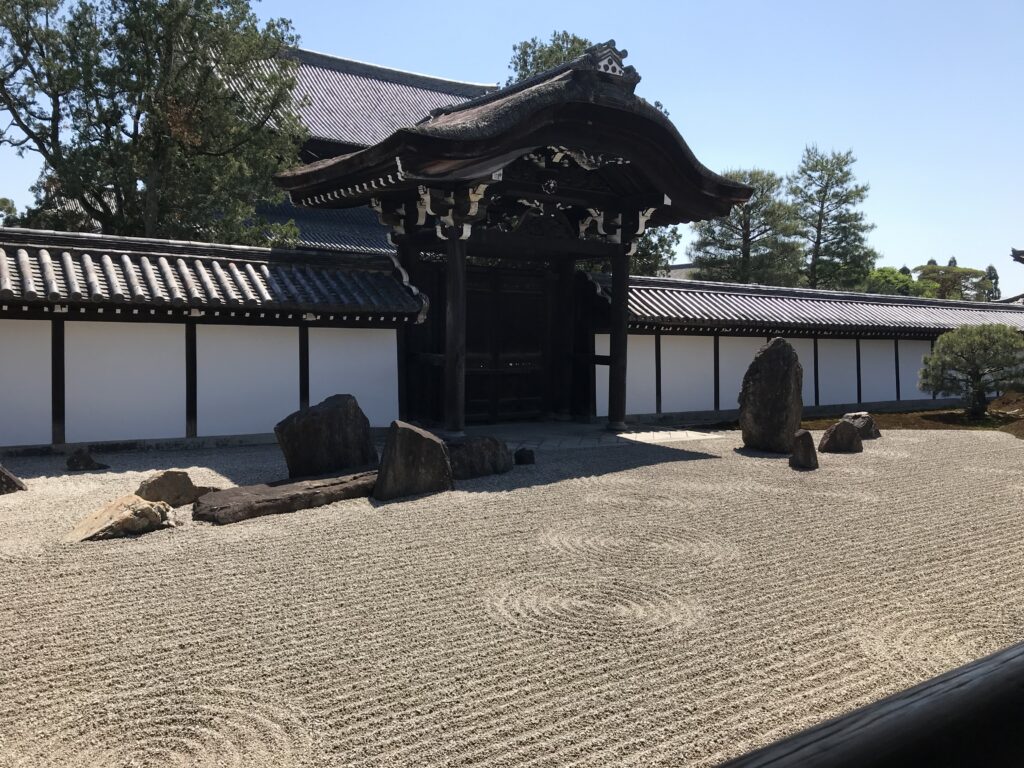

方丈庭園は「八相の庭」と呼ばれますが、釈迦の生涯の八つの重要な出来事を表す言葉「八相成道」に因んで命名されています。その中に、「蓬莱」「方丈」「五山」「北斗七星」が入っていて、本日鑑賞している4つの庭にそれぞれが表現されています。ご訪問の際は、それらがどこに表現されているか、探してみるのも面白いと思います。(つづく)
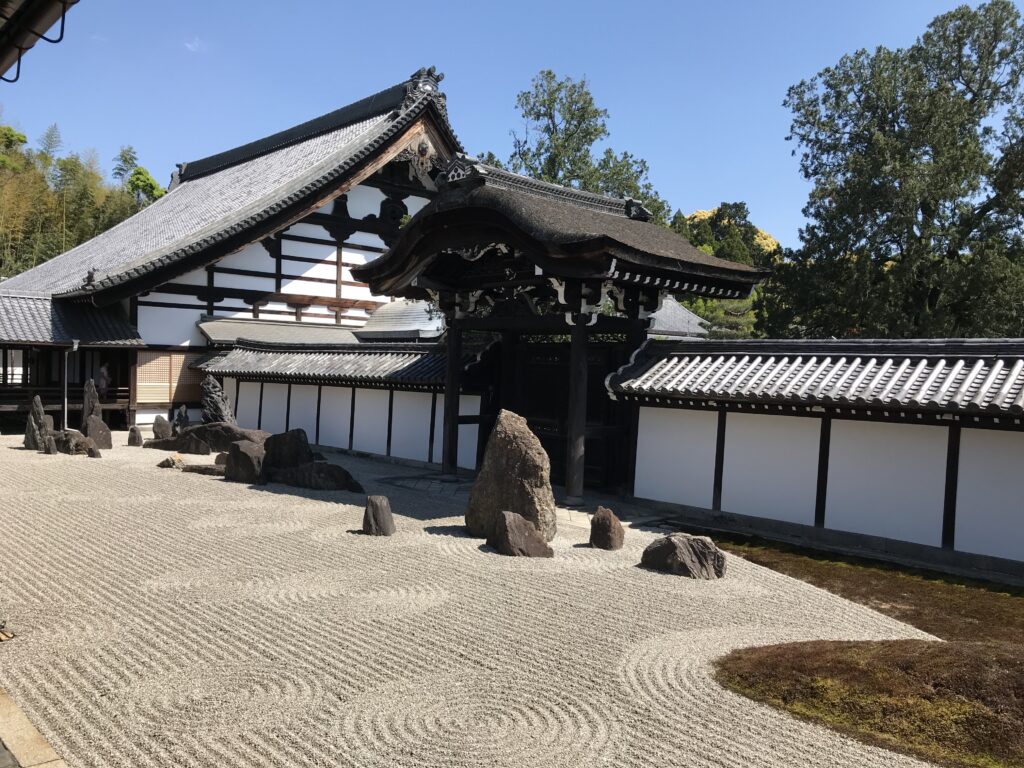
東福寺の御朱印
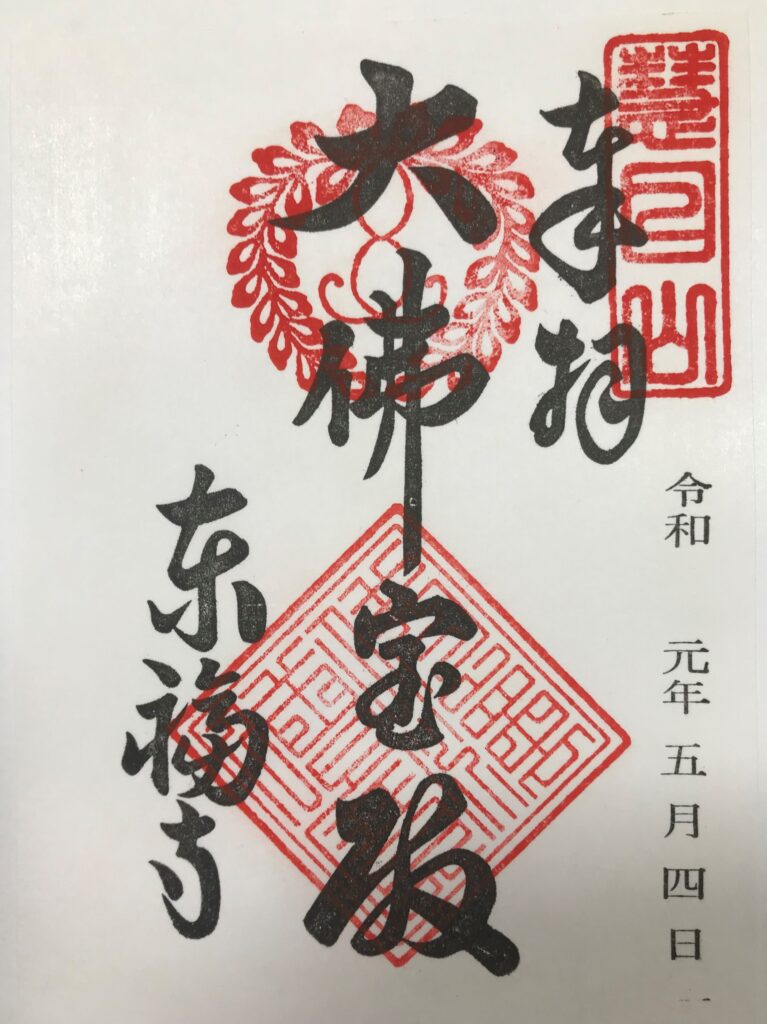
東福寺の庭園が紹介されている書籍
烏賀陽百合さんの「しかけに感動する『京都名庭園』」に東福寺方丈の八相の庭の解説が載っています。
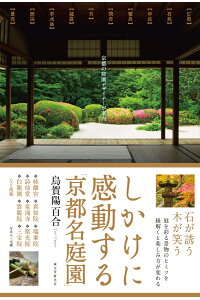
しかけに感動する「京都名庭園」 京都の庭園デザイナーが案内 [ 烏賀陽 百合 ]
価格:1,760円
(2021/5/2 18:44時点)
感想(1件)
Tofukuji Temple (1) Garden of Eight Phases: East and South Gardens
Tofukuji Temple, named after Todaiji Temple and Kofukuji Temple
Tofukuji Temple is famous for its autumn leaves. In particular, the view from Tsutenkyo Bridge or the view of Tsutenkyo Bridge is used on posters as the very image of Kyoto. It was founded in the Kamakura period (1185-1333) by Fujiwara (Kujo) Michiie, the regent of the time, who took two characters from “Higashi” in Todaiji and “Fuku” in Kofukuji and built it as a family temple for the Kujo family. At that time, a 15-meter high statue of the Great Buddha was enshrined in the temple.
View the Garden of Eight Phases
The purpose of this visit was, quite simply, to see the Hojo Garden. This is the “Garden of Eight Phases” completed by Mirei Shigemori in 1939. Four gardens are located on the north, south, east, and west sides of the vast Hojo. From the corridor leading from the treasury to the Hojo, the east garden can be seen on the right. This is called the “Garden of the Big Dipper,” and the pillar stones of the old toilet (Toji) are arranged in the shape of the Big Dipper.
The powerful southern garden of the Great Hojo
And on the left, you can see the south garden. The megaliths in the foreground represent the four sacred islands where hermits are said to live. When I first saw the huge stones from the corridor, I was only impressed by their roughness. When I looked at the garden again from the Hojo side, I could see the concentric circles of white sand on the ground around the stones, representing the sea, and I began to understand the detailed expressions.
In the back of the west side, there is a mountain that resembles the five mountains. The garden is 110 tsubos in size and stretches horizontally, giving it a sense of scale that cannot be captured in a single photo. If you walk back and forth under the eaves of the Hojo and look at the garden from various angles, you will see the garden in a different light.
The Hojo Garden is called the “Garden of Eight Phases,” named after the phrase “Eight Phases of the Way,” which describes eight important events in the life of the Buddha. These include “Horai,” “Hojo,” “Gozan,” and “Big Dipper,” each of which is represented in the four gardens we are viewing today. It would be interesting to find out where they are represented when you visit. (To be continued)
Temple Tofukuji (1) Jardin des Huit Phases : Jardins de l’Est et du Sud
Le temple Tofukuji, nommé après le temple Todaiji et le temple Kofukuji.
Le temple Tofukuji est célèbre pour ses feuilles d’automne. En particulier, la vue du pont Tsutenkyo ou la vue du pont Tsutenkyo est utilisée sur les affiches comme l’image même de Kyoto. Il a été fondé pendant la période Kamakura (1185-1333) par Fujiwara (Kujo) Michiie, le régent de l’époque, qui a pris deux caractères de “Higashi” dans Todaiji et “Fuku” dans Kofukuji et l’a construit comme un temple familial pour la famille Kujo. À cette époque, une statue du Grand Bouddha de 15 mètres de haut était enchâssée dans le temple.
Voir le Jardin des Huit Phases
Le but de cette visite était, tout simplement, de voir le jardin Hojo. Il s’agit du “Jardin des Huit Phases” achevé par Mirei Shigemori en 1939. Quatre jardins sont situés sur les côtés nord, sud, est et ouest du vaste Hojo. Depuis le couloir menant de la trésorerie au Hojo, on peut voir le jardin est sur la droite. On l’appelle le “jardin de la Grande Ourse”, et les pierres des piliers de l’ancienne toilette (Toji) sont disposées en forme de Grande Ourse.
Le puissant jardin du sud du Grand Hojo
Et à gauche, vous pouvez voir le jardin sud. Les mégalithes au premier plan représentent les quatre îles sacrées où l’on dit que les ermites vivent. Lorsque j’ai vu les énormes pierres pour la première fois depuis le couloir, je n’ai été impressionné que par leur rugosité. Lorsque j’ai regardé à nouveau le jardin depuis le côté Hojo, j’ai pu voir les cercles concentriques de sable blanc sur le sol autour des pierres, représentant la mer, et j’ai commencé à comprendre les expressions détaillées.
À l’arrière du côté ouest, il y a une montagne qui ressemble aux cinq montagnes. Le jardin a une taille de 110 tsubos et s’étend horizontalement, ce qui lui donne un sens de l’échelle qui ne peut être capturé dans une seule photo. Si vous allez et venez sous les avant-toits du Hojo et que vous regardez le jardin sous différents angles, vous verrez le jardin sous un jour différent.
Le jardin Hojo est appelé le “jardin des huit phases”, d’après l’expression “Huit phases de la voie”, qui décrit huit événements importants de la vie du Bouddha. Il s’agit de “Horai”, “Hojo”, “Gozan” et “Grande Ourse”, chacun de ces événements étant représenté dans les quatre jardins que nous voyons aujourd’hui. Il serait intéressant de découvrir où ils sont représentés lors de votre visite. (A suivre)
